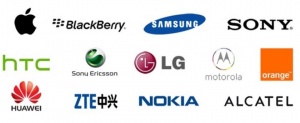
By: Lic. Jaime Davila Gomez, Lawyer
2018 was a year of profound changes in the system of protection of industrial property in Mexico, especially with respect to trademarks and other distinctive signs. In addition to the incorporation into the law of sound, olfactory and hologram marks, now there is also regulation of the so-called Commercial Image, which is the distinctive form in which a product or a service is sold or loaned in the market.
When speaking of commercial image, we refer to the set of all the elements that are used to distinguish a specific product or service from others of the same type in the market, that is, they fulfill the same function as a brand. The difference is that while the brand is a concrete sign and perceptible by the senses, a commercial image is the accumulation of different elements that individually could not receive protection.
Some of those elements could be: colors, sizes, shapes, designs, labels and/or decoration, as well as furniture, operative elements, uniforms or any other aspect that distinguishes in the market. The law does not limit the type of elements that can conform to the Commercial Image.
The Industrial Property Law treats the Commercial Image as a type of trademark, so in order to obtain its protection, it must be obtained through the Mexican Institute of Industrial Property (IMPI) the registrar.
The protection of this new figure is important because it protects the identity of a service or product beyond the brands. It is a common practice in Mexico to generate products that look identical to well-positioned products of well-known brands and simply use a brand name differently from the original, thus avoiding claims based on trademark registrations. Now, the commercial image can be perfectly delimited and protected in favor of all the companies that make use of it to generate differentiation in the market.
 This figure, along with the sound, olfactory and hologram marks, collectively called non-traditional brands, places Mexico as one of the advanced countries in the protection of distinctive signs and generates options for companies to continue innovating and protecting improvements in the presentation of products or services in the Mexican market, as well as indirectly providing protection to the consumer, since the latter is certain for whom a product or service belongs to.
This figure, along with the sound, olfactory and hologram marks, collectively called non-traditional brands, places Mexico as one of the advanced countries in the protection of distinctive signs and generates options for companies to continue innovating and protecting improvements in the presentation of products or services in the Mexican market, as well as indirectly providing protection to the consumer, since the latter is certain for whom a product or service belongs to.





